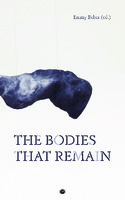The Bodies That Remain
Contributor(s)
Beber, Emmy (editor)
Collection
ScholarLedLanguage
EnglishAbstract
The Bodies That Remain is a collection of bodies and absences. Through biography, experimental essay, interview, fictional manifestation, and poetic extraction, The Bodies That Remain is a collection of texts and images on the bodies of artists and writers who battled with the frustration of their own physicality and whose work reckoned with these limitations and continued beyond them. The essays in The Bodies That Remain look back at how the identities of these bodies were shaped by the spaces around them, through the retelling of memory, through stories told by others, of how their work, processed by their body, made it possible for others to experience sensations – mourning, desire, or a nostalgia that could not belong to another, to another’s body – and in capturing this ability, their work confirms the body’s urgency. Amongst others, The Bodies That Remain tells the story of Emily Dickinson’s decay, the missing grave of Valeska Gert, the voice and sound of the body of Judee Sill, and the derailed body (and work) of Jane Bowles. It questions the absent body but broken organs of JT Leroy as they find themselves scattered across texts, and also interrogates the loss of distinction of illness for Jules de Goncourt as syphilis riddled his nervous system. It retrieves the illusory body of Kathy Acker through dream and through horror, sees the morphing body of Michael Jackson in becoming all of the bodies he was asked to be, and looks toward Sylvia Plath and the language of her own body. Where ‘body’ as a verb makes material something abstract, The Bodies That Remain, as a collection, became bodily.
Keywords
embodiment; mourning; posthumous literature; mortality; metempsychosisDOI
10.21983/P3.0212.1.00ISBN
9781947447684, 9781947447677OCN
1100491515Publisher
punctum booksPublisher website
https://punctumbooks.com/Publication date and place
Brooklyn, NY, 2018Classification
Literary essays


 Download
Download